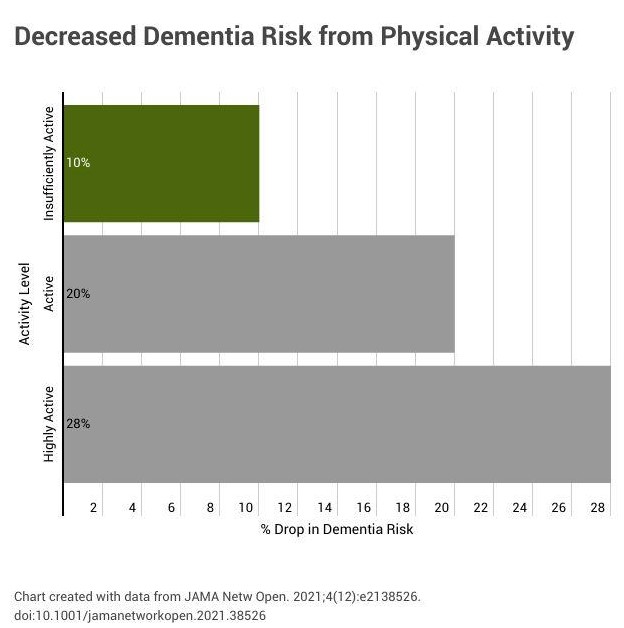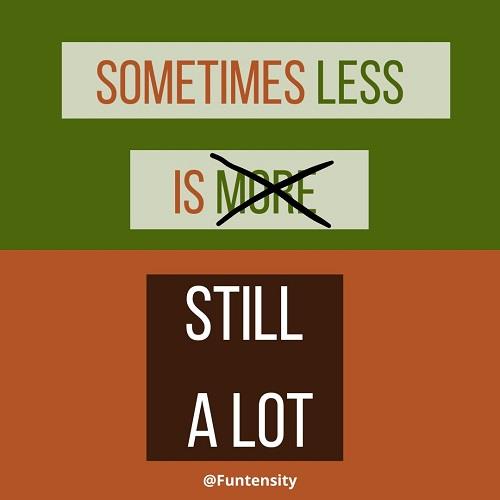“Sometimes less is more.” One of those expressions like “bad things happen in threes” that are mostly nonsense, but have become repeated often enough that we accept them.
When it comes to physical activity and reduction of dementia risk however, less is still a lot. More is more (obviously), but less is still a lot. Yes, doing less physical activity than you “should” still may provide health benefits. Here’s to you, underachievers!
Over 62,000 adults aged 68-78 without dementia were asked about activity levels. Even those people who were “insufficiently active” (see below) had a 10% reduction in risk compared to people who were fully inactive.

A “MET,” or metabolic equivalent for task, is a common unit to measure physical activity. At rest, you expend 1 MET. This is the baseline and anything you do can therefore be measured in multiples of METs. (A MET is 1 calorie per kg of body x minutes of activity.)
For example, leisurely biking at a slow speed is rated at 3.5 METs while biking at a moderate effort is rated at 8.0 METs. There are tables easily available online listing MET scores for hundreds of activities.
In this study, which, keep in mind was generated with physical activity questionnaires rather than actual measurement of activity levels, the following categories were used to define people’s activity levels:
Inactive: 0 METs
Insufficiently Active: 1-499 METs (average level in study: 284 METs)
Active: 500-999 METs (average: 675 METs)
Highly Active: 1000 METs and higher (average: 1627 METs)
Physical activity guidelines recommend the “active” level of between 500-999 METs per week of physical activity.
Follow-up with participants was between anywhere from 1-4 years and as the chart above showed, compared to inactive people, dementia risk reduction levels were 10% for the Insufficiently Active, 20% for the Active, and 28% for the Highly Active.
Too many people get discouraged by not doing “enough” when it comes to physical activity. But every bit you do matters. We are meant to move often and at varying intensities. “Enough” is a black-and-white concept of good or bad, when our health and biology is often a matter of gray areas and trying to do more healthful things than unhealthful things. It’s not either-or and it never will be.
When it comes to physical activity, every little bit helps and every little bit counts. Like another terrible expression says, “a penny saved is a penny earned.” (Unless you initially stole the penny, it’s safe to assume you already earned the penny you are saving.) So, when it comes to physical activity, a “penny saved is a penny saved.” And every penny counts.
Reference
Yoon M, Yang P, Jin M, et al. Association of Physical Activity Level With Risk of Dementia in a Nationwide Cohort in Korea. JAMA Netw Open. 2021;4(12):e2138526. doi:10.1001/jamanetworkopen.2021.38526 Retrieved June 2, 2022 from https://jamanetwork.com/journals/jamanetworkopen/fullarticle/2787226

